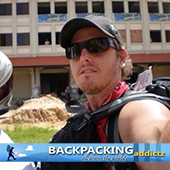- Population: 22.9 million (UN, 2005)
- Capital: Pyongyang
- Area: 122,762 sq km (47,399 sq miles)
- Major language: Korean
- Major religions: Mainly atheist or non-religious, traditional beliefs
- Life expectancy: 60 years (men), 66 years (women) (UN)
- Monetary unit: 1 won = 100 chon
Korea is not as acknowledged as neighbours Japan or China, but is a nation no less than any other with a history dating as early 5 millennia with archaeological evidence suggesting the peninsula to be inhabited for over 500,000 years now. Korea was formerly one country until the peninsula was divided into Soviet and American zones during the Second World War for North and South Korea consecutively, eventually to possess two separate governments in 1948 when North Korea refused participation in a U.N. supervised unification elections. Despite its sensationalized fidgety international relations, none can suppress the natural beauty of North Korea that is worth the front page as any political unrest.
GEOGRAPHY
North Korea located between 40 00 N, 127 00 E coordinates and is the larger of the two states with an area of 120,538 km². Seventy percent of the entire Korean peninsula is covered with mountains, and some 80% of these mountains and highlands are in North Korea. The continuous mountain ranges, like Hamgyong or Rangrim, make a perfect view impressing on Korea’s visitors as the waves of a sea in a heavy storm.
The tallest mountains of 2000 metres (or higher) in the entire peninsula can be also found in this northern state. The highest point is Baekdu Mountain (Paektu, Paektusan), 2,744 meters above sea level, while the lowest point is the Sea of Japan, 0 metres. Baekdu is so sacred a symbol of the Korean spirit and is featured in Korea’s anthem due to the belief that the first Korean humans descended from this mountain. N. Korea also prides on its various natural hot springs and waterfalls. The significant rivers are Amnokgang (Yalu, 790 km), and Dumangang (Tumen, 521 km),
CLIMATE
The climate in North Korea is continental with four distinct seasons: winter, spring, autumn, and a monsoonal summer. Winters are long and harsh, spring and autumn tender the most favourable weather conditions, particularly in May and October, consecutively, whereas summers are hot, humid, and wet. January is coldest month, and is hottest at 30 oC between July and August.
PEOPLE
Based on the official DPRK statistics, the population of North Korea as of 2010 is 23,479,088. Interesting statistics of almost 100% are of Korean ethnicity; 99% literacy; and 0% HIV cases. North Korea remains one of the most ethnically homogeneous nations as ethnic tribes and international communities are scant to nil due to an incredibly low rate of immigration. Foreigners in the region are mostly tourists. Life expectancy has fallen from 70-75 to 63.81 years due to insufficient food supply and medical care.
CULTURE
Modern culture can be described as Korean traditions that bring with it the influences of neighboring countries that it has adapted for 3 millennia. Stronger provisions are currently at hand to preserve this traditional Korean culture with some degree of suppression to modern free expressions, that is supposedly the essence of modern art. Instead, cultural expression and art are didactic and serves as the vehicle for Juche ideology that essentially asserts the distinctiveness and creativity of Korean culture and/by the masses. Literally, literature and music are venues for politics and revolution, while movies, instead of entertainment, operate for its role in the social education of the masses.
LANGUAGE
KOREAN (Chosŏnmal) is North Korea’s national language that is the same as the Korean spoken in the southern state. Korean in the north and south render dialect differences, but none so significant that the language is still intelligible to one another. Code-mixing of Korean and foreign languages, especially English, is prohibited and limited with the goal of a near homogenous language and writing system (the phonetic writing system Chosongul).
ENGLISH replaced Russian as the first foreign language as economic development is associated with English proficiency. Within the decade, English is growing in popularity especially with the P’yongyang elite. Politics in education persists with English more widely read and learned in North Korea than South as part of yet another propaganda “knowing the enemy”; although there is still control with access to English texts.
RELIGION
North Korea practices freedom of belief and of “disbelief” as a primarily atheist state. The lesser majority are Buddhists and Confucians, while Christians and traditional Shamans are a minority. Government introduced religions are initiated to limit separation.
ATTRACTION
North Korea tenders another world of backpacker adventure with magnificent nature wonders of rivers, streams, hot springs and waterfalls. Not neglecting the imposing view from the legendary mountain ranges that will surely capture your heart. From Pyongyang’s historical architecture to its colossal statues of the Great Leader, to the scenic Geumgangsan (Diamond Mountain) or one of North Korea’s ranges, or to the thrilling fun fares at Kaesung Youth Fair, there will be something to celebrate. “The Wheel of Death” and “Roller Coaster of Death” seem pretty suggestive, however. Fangchuan may be on top of the list for backpackers for its sense of geographic accomplishment. It is a small town converging Russia, China, and Korea with sublime and spectacular landscape view and signs in all 3 languages. Amazing!
FOOD
Korean cuisine can be summed up as “hot, spicy, and healthy.” The basic elements of a dish almost always include soy sauce, garlic, chilli pepper, green onions and sesame seeds/oil. Korean cuisine is based on rice, noodles, vegetables and meat, usually paired with kimchi (usually fermented cabbage). Tofu and soy sauce are favourites as creating them from cultivated soybeans dates back to ca. 1000–900 BCE.
North Korea enjoy food made from meat, beans, and green peas to endure the long cold season. The flavours of North Korean variety such as the kimchi, with special mention to Pyongyang province, have milder, watery, and less salty and peppery from other regions. Famous North Korean dishes are Naengmyeon Kyeoul Baech’u (cold noodle winter cabbage) Kimchi, Gabi (eggplant) and Kimchi, Dongch’imi (water radish).
Some Koreans also eat dog meat as is tradition. However, it is not as widely consumed as other meats.
ODD-BALL HABITS
1. Spitting – Hacking a Louie is absolutely alright. Koreans even hack into cigarette butts to kill them, so hack away!
2. Peeing in public (tires, walls, sewer grates, etc.) – This is cool especially if the toilets are too far away, which is normally the case for some.
3. Flagging a bus – Go in a meter on the street and hail a bus this way or they would likely just drive past.
4. Internet banning – The internet is banned for locals, but can be accessed by foreigner by filing an application for permission days in advance, but will be screened and monitored. Mobile phones are controlled and used with request for permission, but can’t be used for international calls.
Josh Boorman
Editor-in-chief
Backpacking Addictz
Twitter: @backpackaddictz
Backpacking Addictz is a website set up by backpackers for the use of backpackers. On this site you will find a lot of very valuable backpacking information surrounding different destinations and countries from around the world. Also very helpful backpacking tips and travel advice on planning a budget travel and backpacking adventure. You will also find an enthusiastic and insightful backpacking blog which is regularly updated with new posts and article.
Backpacking Addictz Travel eGuides are a fantastic, cheap and easy way to get hold of a vast amount of backpacking information prior to setting off on your backpacking adventure.







Leave A Response